The latest Stephen King adaptation that has got cinephiles talking is The Long Walk by Francis Lawrence. The movie is based on a novel released way back in 1979, but its timeless dystopian-themed narrative has found a way to resonate with modern movie goers. It stars experienced actors and new talents, including Cooper Hoffman, David Jonsson, Ben Wang, Mark Hamill, and more.
In The Long Walk, like in the original novel, the story revolves around a high-stakes contest that witnesses massive participation from teenage boys. They have to walk along a preset route without stopping. Those who are unable to maintain the minimum required speed are eliminated by members of their military escort.
Even though The Long Walk carries a lot of the elements from the book, the writers did make some changes (mentioned on this list) that make the feature film different from the source material.
Disclaimer: This list contains information from various sources.
7 interesting changes that make The Long Walk different from Stephen King's novel
1) Scramm from the book doesn't make it to the movie adaptation
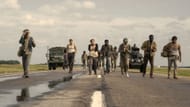
In Stephen King's The Long Walk, the readers become invested in the predicament of the contestants because they start to connect with their life stories and motivations. The same is the case in the adaptation. Viewers are drawn to the different personalities, and even though it is clear that there can only be one winner, they can't help but hope for a miracle to happen.
Viewers have their own favorites when it comes to the walkers, but one important character that is missing from the action is Scramm. In the novel, it is established that Scramm is the crowd favorite and most likely to win. He has a pregnant wife back home, and he believes that the motivation to provide for them will keep him going. It is unfortunate that the movie version of The Long Walk excluded him.
2) In the movie, participants had to maintain at least three miles per hour

When Stephen King wrote The Long Walk, he probably wasn't thinking about it being adapted to screen. And even if that thought did enter his mind at some point, he wouldn't have made changes to his narrative, thinking that future directors would have a hard time bringing his vision to life.
But the truth of the matter is, the filming crew couldn't stay completely faithful to the book because of the limitations of the medium. In the movie The Long Walk, the number of walkers was reduced to 50, whereas in the book, a total of 100 participants were selected to compete.
The most significant change has to be the minimum speed rule. In the book, the participants needed to maintain a speed of four miles per hour or faster, but in the movie, the walkers maintained a pace of at least three miles per hour. If the actors were to maintain the original speed, they would need to walk briskly, which would have negatively impacted the conversations and bonding scenes.
3) In the book, Ray Garraty's motive isn't revenge
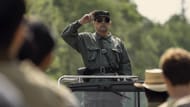
In The Long Walk and the book it is based on, Ray Garraty is the main character. Onscreen, the character is portrayed by Cooper Hoffman, who made his acting debut in Licorice Pizza (2021). In the novel, Garraty's father is Squaded for his outspoken political opinion. Due to his absence, Garraty and his mother had to get by with very little money, which is why he wants to win.
In comparison, Hoffman's character in The Long Walk is fueled by revenge. During a scene with David Jonsson's Peter McVries, he reveals that he saw the Major (Mark Hamill) kill his father, and he thinks that winning the event can help him get closer to him. Even though this gives Garraty plenty of motivation to carry on walking, it is rather different from what was written in the book.
4) Peter McVries' scar has a different backstory in the book
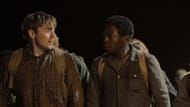
Besides Garraty, viewers watching The Long Walk find themselves connecting to Peter McVries. Jonsson's character in the movie is very much like the book version. They are both charismatic and quick-witted. However, bookworms who have read Stephen King's novel would agree that McVries is a lot amicable and supportive in the adaptation.
During one of the scenes in The Long Walk, McVries reveals that his scar is a result of bullying when he was a small child. However, the origin of the scar is very different in the novel.
McVries shares that the scar is from a fight he had with his girlfriend. They were in love, but he started to resent her after she got a promotion at work. Although it is not clear if he assaulted her, it felt like the scar could be from an act of self-defense. This information will certainly change the way fans remember the character going forward.
5) Hank Olson's death is much more brutal in the book
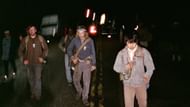
Stephen King is an expert at writing horrifying stories that leave readers with nightmare-inducing thoughts. And so, it is only natural that The Long Walk will have impactful scenes that leave a lasting impression. Also, given the premise, it is only logical for viewers to assume that things are not going to end well for the participants.
When Ben Wang's Hank Olson reaches his limit and lashes out at the soldiers, the audience knows what is coming. When the shot is fired, Hank falls to the ground. It is obvious that he is still alive, but the soldiers don't kill him. They leave him in that condition to show others what will happen to them if they choose to rebel. Even though this is a sad end for Hank, his fate is much worse in the book.
According to the book, Hank rebels and gets shot, but he tries to ignore the gunshot wound and keeps walking. The soldiers shoot him multiple times and at one point, his internal organs are hanging out. He dies after he finally collapses.
6) Peter McVries dies in the book

The new adaptation saw the biggest change in the ending, which also came as a surprise for those who have read Stephen King's novel. In the book, the last three walkers who make it to the end stretch are Peter McVries, Ray Garraty and Billy Stebbins. There comes a point when McVries chooses to sit down so that Garraty and Stebbins are the only two competitors left. This is when he dies.
In the movie version of The Long Walk, McVries tries to do the same thing after Stebbins is killed. But this is when Garraty forces him to get back on his feet. Garraty gets shot, but McVries is saved. He then goes on to win the race. In the book, Garraty is the character who manages to survive till the end and wins the Long Walk.
7) The dark, mysterious figure is missing in the movie
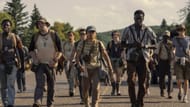
Even though The Long Walk is an enthralling watch, the end message that it imparts to viewers is very different from the books. In the book, Garraty makes it all the way to the finish line, but seems to have lost his sanity. He starts to see a dark, mysterious figure that beckons him forward. Even after he has won, he cannot stop walking, which doesn't feel like a real win.
In the movie, the ending is a little more hopeful. McVries wins the race and ends up shooting the Major dead. As expected, chaos erupts, but McVries is able to slip out into the night. The Long Walk makes the viewer feel that even though McVries will carry scars from the experience that will last a lifetime, he is still able to move on and take charge of his life.
Bookworms may be divided on whether these changes are for the better or worse, but it cannot be denied that The Long Walk is an entertaining watch that keeps the audience invested till the very end.